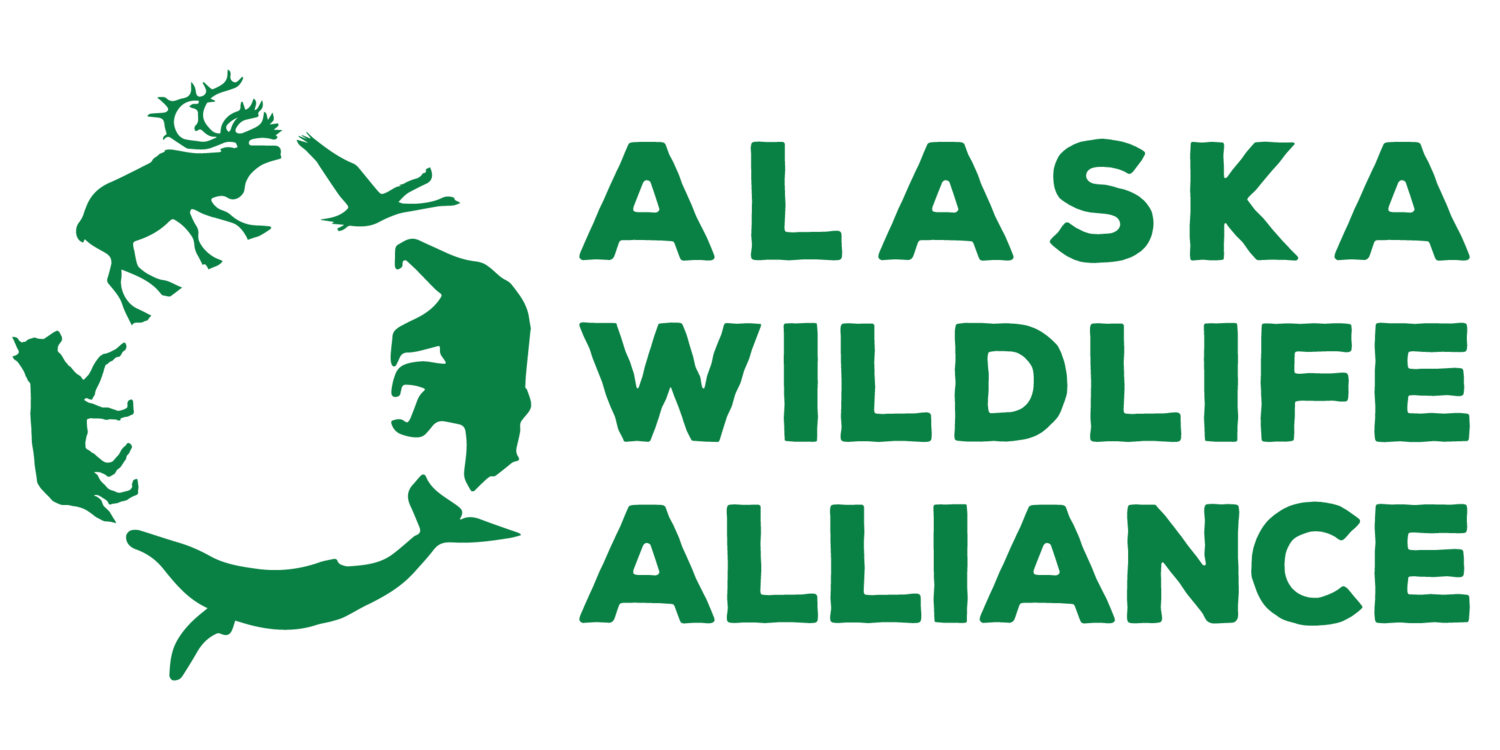Cook Inlet beluga whales are an endangered species, and the main threats to their recovery have been identified as: catastrophic events, cumulative effects, noise, disease agents, habitat loss, unauthorized take, subsistence hunting, pollution, predation, and a reduction in prey.
This year, there have been several presentations on research regarding these threats that were funded in part by the Alaska Wildlife Alliance. In January, Mandy Migura and Ragen Davey presented a poster at the Alaska Marine Science Symposium (AMSS) on pollution and contaminants in Cook Inlet that may be affecting belugas. Because belugas live in Cook Inlet year-round, the contaminants they come into contact with are directly related to Cook Inlet water quality. However, no Cook Inlet-wide monitoring exists for known contaminants that may affect fish and wildlife.
Migura and Davey’s research found that, while there are a lot of emerging contaminants in Cook Inlet, we don’t know where the contaminants are coming from or the level of contaminants. They also discovered there is very little overlap in the contaminants that discharge permits require testing for and what contaminants are known to be in belugas and their prey.
They recommend a long-term, Inlet-wide monitoring program to test for known contaminants, as well as a comprehensive review of permitting requirements for contaminant discharge, and testing and regular monitoring in Cook Inlet.
Check out the poster here, or below.
William Bechtol, a fisheries biologist for Alaska Wildlife Alliance, also presented preliminary research on Cook Inlet beluga prey availability at the AMSS, as well as at the Cook Inlet Joint Fish Habitat Meeting, hosted by UAA Alaska Center for Conservation Science and the Kachemak Bay National Estuarine Research Reserve Salmon Watershed Stewardship, in April.
Cook Inlet beluga whale habitat in Upper and Lower Cook Inlet, with population estimates. From Bechtol’s Joint Fish Habitat presentation.
To address prey reduction, the 2016 Cook Inlet beluga whale recovery plan recommends that prey abundance and availability in relation to beluga abundance be evaluated, as well as the variation in types and quality of prey that belugas are foraging on. This data can help ensure that fisheries management is accommodating beluga prey needs. The primary prey species of Cook Inlet beluga whales are salmon, cod, eulachon, flounder, and invertebrates.
However, Bechtol has found that surveys for these prey species are inconsistent and lacking, and future surveys are uncertain given current budgets.
Eulachon, a major food source in the spring for belugas as well as a commercial and personal fishery, lack consistent, fishery-independent surveys in the Cook Inlet. The Susitna River eulachon spawning migration was last assessed in 2016, otherwise, the closest data sets are from the northern Gulf of Alaska, as well as inconsistent ADFG surveys in Lower Cook Inlet and Kodiak. While eulachon populations have historically been high in the mid-2000s, they’ve fallen in recent years.
From Bechtol’s Joint Fish Habitat presentation.
Furthermore, the monitoring of salmon escapements at several northern Cook Inlet tributaries has been reduced in recent years, and commercial salmon harvests have declined in the last 40 years. Other species, like cod and flatfish, are not assessed in Upper Cook Inlet, and there is no data available on prey availability from the fall to the spring.
Bechtol recommends that fishery-independent surveys be implemented for eulachon in Upper Cook Inlet, and salmon escapement monitoring is reinstated at northern Cook Inlet tributaries as well as surveys of other species in Lower Cook Inlet.
Eulachon, in particular, are important in the spring when belugas are birthing and lactating (last spring, AWA helped secure over 100 more tons of eulachon for Cook Inlet belugas!). More research on Cook Inlet eulachon and their relationship to belugas, including data on eulachon genetics, information on prey resources available from fall to spring, and multi-species surveys, would be helpful for beluga recovery.
Check out the poster from the Alaska Marine Science Symposium here and the full slide presentation from the Joint Fish Habitat Meeting here. Both presentations can also be viewed below.




